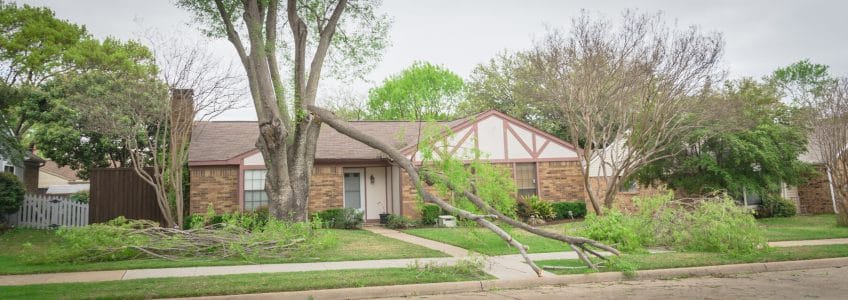
Bad weather can take you by surprise, create chaos, and wreak havoc on your home. If a tree falls on top of your roof, you have damage from strong winds, hail, or heavy rain, you could find yourself in the position of needing to make an insurance claim.
If your house falls victim to inclement weather, you’ll want to ensure that you understand how to file a claim and get back to your life as quickly as possible. No one particularly enjoys dealing with insurance adjusters or living in hotels while their home is being repaired. However, with the large storms and blizzards that have made the news lately, we need to be prepared in the event of home damage. There are some tips to help get your insurance to cover your roof repairs. But what if you don’t even know where to begin?
How to Make an Insurance Claim
We will take you through the process of filing an insurance claim after a severe storm. It can be stressful to make an insurance claim, so our experts have gathered some advice to get the process moving.
1. Contact Your Insurance Company ASAP
Be prepared to give your homeowners insurance your policy number and the best method to contact you. Keep in mind that after a strong storm, adjusters visit areas with the heaviest damage first. Expect to provide a description of the extent of the property damage. Clarify any individual needs of your family, especially if your personal or medical circumstances would warrant priority.
The insurance representative can let you know when you can expect to be in contact with the insurance adjuster, so you are prepared. Since adjusters could visit areas where cell towers are down, it’s also wise to get the phone number of a representative at the call center, so you have an additional name.
When the adjuster arrives at your home, ask for their identification before letting them inside.
If you have to file a flood insurance claim, there may be a 30-day waiting period. Start by contacting the agent or insurance broker who sold you the policy to start the claims process.
 2. Document Your Loss
2. Document Your Loss
Your adjuster will examine the damage to your home and possessions so that they can write you a check and you can begin to rebuild and replace.
It’s a good idea to take pictures and write down the details of the damaged items, including when they were purchased and the approximate value. Find any receipts if you have them. Many companies will ask for an inventory list of losses.
3. Ask About Exclusions and Limitations in Your Policy
After you meet with the insurance company, the adjuster or a representative will give you a better picture of what the company plans to pay for the claim.
If your insurer asserts that your policy won’t cover all the damages, or you think the compensation is not fair, ask the company’s representative to clarify in writing how they got to that estimate. They should also include why certain items might not be covered and whether there are limits to your coverage.
If you have custom work on your house, an adjuster may have trouble correctly estimating the value. It would be best to get an opinion from an outside contractor.
4. Keep Track of Your Encounters
When the insurance adjuster finishes, keep a written record of your conversations, either by email or text. Keep notes about unreturned calls, missed appointments, what you have discussed, and even the adjuster’s attitude.
Make copies of each document you receive. If the adjuster tells you to make repairs, get that authorization in writing. Although, hopefully, you won’t need this information. However, it will be helpful if you end up in arbitration or dispute resolution.
5. Get Text Alerts
Many insurance companies now provide text message updates. As a result, you will receive text messages on your phone when you initiate your claim, when the estimate is available, and when a payment is sent.
6. Know the Emergency Help Available
Suppose you find yourself needing emergency services, such as cleaning water from your home, protecting your roof, or boarding up windows and doors. Certain companies will send approved emergency services to protect your home from sustaining additional damage.
If your home is severely damaged and uninhabitable, your insurance will give you a check for living expenses.
7. Consider a Public Adjuster
If your claim is substantial, you may need the help of a third party or a public adjuster. They work on your behalf and represent you during the claim. However, they do charge a fee.
To locate a public adjuster, check out the National Association of Public Insurance Adjusters. Ask for references from previous clients and look whether they have several years of experience and a Minnesota state license.
Your Storm Damage Contractor
If you had recent storm damage to your property, the last thing you need is the added stress of an errant insurance claim. That is why we offer insurance claim assistance. When we are at your home, Advantage Construction puts our customers first, working with your schedule and completing repairs promptly. We understand that finding a contractor after a storm and filing insurance claims is a nerve-wracking experience. That is why we make it our priority to get your house as beautiful as ever, so you can get back to your life. Contact us today.

